 Sometimes, I hear from my friends that it’s too soon to buy a new fishing line yet, the season is not over. Then I meet them after some time I find out they almost caught a big trophy fish, but it got away. That wasn’t because the fish was strong. That happens because the line is old, streaked, and stretched. The fishing line is the most crucial element of our set. Indeed, the equipment does not catch but an angler, but the line must, but it must be of good quality, fresh and durable. That is why you need the best fishing line.
Sometimes, I hear from my friends that it’s too soon to buy a new fishing line yet, the season is not over. Then I meet them after some time I find out they almost caught a big trophy fish, but it got away. That wasn’t because the fish was strong. That happens because the line is old, streaked, and stretched. The fishing line is the most crucial element of our set. Indeed, the equipment does not catch but an angler, but the line must, but it must be of good quality, fresh and durable. That is why you need the best fishing line.
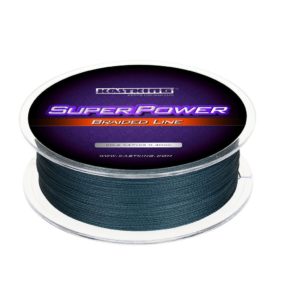
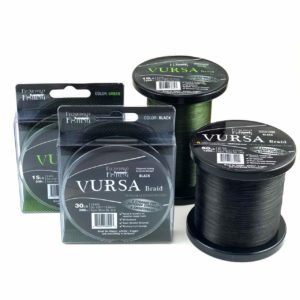
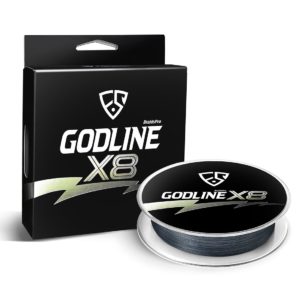
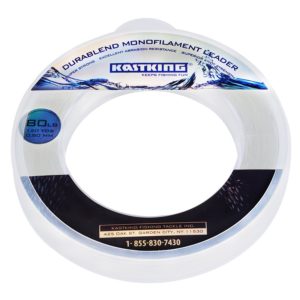
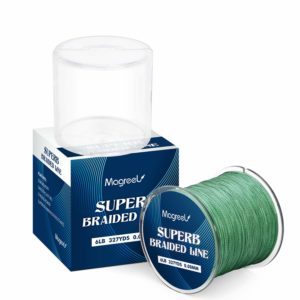
Top 5 Best Fishing Lines in 2019
1KastKing SuperPower Line — Thin and Strong
A braided line is a way to go if you want some extra reliability. First, it is wear-proof. Second, the knots are a lot stronger. The line is very silky, but it’s not treated with wax-like substances. The line doesn’t stretch at all and has a very low diameter.
With this line, you can attain better, farther casts, and the line won’t get tangled.
- Zero-stretch
- Wearproof
- Strong knots
- Impregnated with dye
2Fitzgerald Vursa Line — 8-Strand Fade Resistant
This dual-purpose fishing line has 8 strands, which makes it more reliable. It is also extra flexible and fade-resistant. The line is barely noticeable for the fish, and that’s crucial for the success of fishing.
You don’t have to worry about UV radiation as well.
- UV resistant
- Fade resistant
- 8 strands
- Price
3FISHINGSIR GODLINE X8 Line — Abrasion-Proof
This is an abrasion-proof 8-strand fishing line that was made to give anglers a reasonably priced product. The price was cut down, yes, but that doesn’t mean that the fishing line is suboptimal. It has excellent tensile strength and is quite durable.
The line is coated with resin, which allows increasing its life cycle even more.
- Tensile strength
- Durability
- Wear-resistant
- Fades fast
4KastKing DuraBlend Line — Best Monofilament Line
This KastKing DuraBlend is an excellent big-game fishing line. As a big-game tackle, it’s not really a good match for small fish. It’s thick and noticeable. But it is also very durable and can bear up to 100 pounds, although I can’t promise you that a fish that heavy won’t break away.
- Tensile strength
- Up to 100 pounds
- Soft and flexible
- Not suitable for small fish
- Dedicated saltwater fishing line
5Magreel Line — High-Load & Abrasion-Resistant
If you want to get a massive trophy, and you plan to use a spinning rod, this abrasion resistant fishing line is precisely what you need. It is very thin, but it can still bear up to 80 pounds. A perfect option for fishing for massive predatory fish.
It is one of the best fishing lines for bass.
- Up to 80 lbs
- 4 or 8 strands — depending on the type
- Can’t handle a backlash
Buyer’s Guide
When we have a wide selection of fishing lines, we can be a little bit lost because of the assortment available to us. It is believed that cheap products are intrinsically defective products. I wouldn’t say that that expression is 100% correct, but it is also not untrue.
Cheap products are often inadequate, and fishing lines are no exception. Fortunately, not every inexpensive product—be it a fishing product or something else entirely—is deprived of quality. All you have to do is to choose the right fishing line for your needs, and even if it’s cheap, it’s probably going to be good enough for you.
But what is the problem with low-cost fishing lines? It’s not just the price. The thing is, cheap lines often have a substantial memory effect. And since fishing tackle has nothing to do with computers, that’s not a good thing. When it comes to fishing lines, the memory effect is the ability of the line to keep the shape of the spool, and it’s unwelcome. After a few fishing sessions, a high memory fishing line is going to end up tangled every second time you fish. No matter how much the fishing line is worth, you’ll want to avoid that at all costs.
What Line to Buy for Feeders and Rods
If you want to fish using both feeders and regular rods, it is best to choose a solid line, resistant to abrasion. The color should not be ignored, either. It’s best to ensure that the color of the line matches the color of the bottom.
Unfortunately, some fishing line manufacturers claim that their products are sinkable, when in fact they are not.
So what can you do if you bought such a line? You can try using a dishwashing liquid detergent, although I really don’t recommend it because of environmental concerns. I wouldn’t call any sort of detergent a welcome addition to a natural water body. Anyways, it may help to sink the line by breaking the surface tension of the water. Or, you can try any specially made solutions that are eco-friendly, break the surface tension just as well, preserve the line, and even degrease it.
Remember that the line absorbs the shocks of the fish tagging and jerking the hook. When fishing at a long distance, the stretching of the line when pulling the fish may undermine its integrity. You need reinforced fishing lines for that kind of a situation. If the line is treated with fluorocarbon, it’s bound to be extra strong and durable.
What Line to Buy for the Bolognese Method
This method requires that you use a floating fishing line since the line isn’t supposed to go underwater. The same thing is true for surface fishing.
Such a line is also more lightweight than a sinkable line and allows for a farther cast.
Color of the Line
Most of the time, the color of the line is not important at all. But it does play a role, and you have to account for the fishing technique you’re trying to utilize, as well as the current conditions.
If you’re using feeder rods or even just fly fishing, and the line is to go deep, I advise that you try to match the color of the line to the color of the water, its murkiness and the type of the bottom. Your goal here is to make the line unnoticeable.
That said, you don’t need that every time. If you’re using the spinning method, you actually need a high visibility fishing line. Spinning is not about camouflaging the line, it’s all about grabbing the attention of a predator fish, using the lure and the line both. That’s is you need bright colors in this scenario, in fact, they are the most desirable. I personally recommend bright-red and orange lines since they are easy to notice in any weather conditions.
High-visibility lines also have another benefit: they make evading the aquatic vegetation easy when fishing, especially when it’s windy and the waves are rocking the boat.
Remember, fish don’t have the same vision as us. Scratch that, they don’t have the same vision as each other. Any species’ color perception can be a little bit different. That is why what makes a high-visibility line for us can be all but invisible to your target fish. That is why you need to know your target.
Let’s take largemouth bass, for instance. The bass cannot distinguish between yellow and white, as well as green and blue. On the other hand, this species does have the ability to distinguish red and green from all grey scale stimuli. That means that the bass can boast dichromatic vision and does use color-based cues when looking for food and avoiding danger.
For general purposes, it is safest to use colorless lines and such in different shades of gray and blue. However, avoiding gloss is essential. Color perception does not matter if your fishing line is all shiny. Reflected light can deter fish no matter what color the line is, so it is better to choose matte lines.
How to maintain the line
You need to change even the best lines quite often. For less durable lines, you may also have to change them every two weeks. Of course, it doesn’t just depend on the quality of the line itself. How often you fish, just how massive the load is each time, the number of hooks, the storage conditions, all those are important factors.
Some anglers store their tackle in the trunk of the car. I can’t honestly say if anything is worse than that. There is a reason you shouldn’t leave children and pets in your vehicle in the summer. On a hot day, the temperature in the car can reach even more than 120 degrees Fahrenheit. In the trunk, the temperature may reach a lot higher than that. It is no wonder that a fishing line can lose its properties after a few hours in such conditions, shrinking and even melting.
Fishing lines should be stored in a well-shaded place, never in the sun. The heat is harmful, and the UV radiation is even more damaging.
It may be a surprise for you, but a fishing line needs water. If the line stays in a dry place for too long, it loses water, and that makes it less elastic. If you use such a line as is, the material will grow fatigued and acquire microcracks, which may be hard to notice but translate into lowered strength. To prevent that from happening, the line should be dipped in water before fishing.
You should remember that not every fishing line has adequate resistance to chemicals dissolved in the water. That is why I advise against using caustic detergents and tap water without first testing it.
Many anglers downplay the importance of checking the condition of the tips of the line, but it is essential, especially just after fishing. You should examine the line just after fishing, especially the last few inches. If the line has knots or a bit torn, you should cut it off the damaged line. Yes, it’s a sacrifice, but you won’t lose the big trophy fish of your dreams the next time.
When buying a fishing line, you need to know how thick the lines should be. You also need to distinguish between braided lines and monofilament. Braided lines are more resistant to mechanical damage or wear, but they get tangled easily if you miscast them. Braided lines also absorb water, which means you shouldn’t leave it outside in winter.
